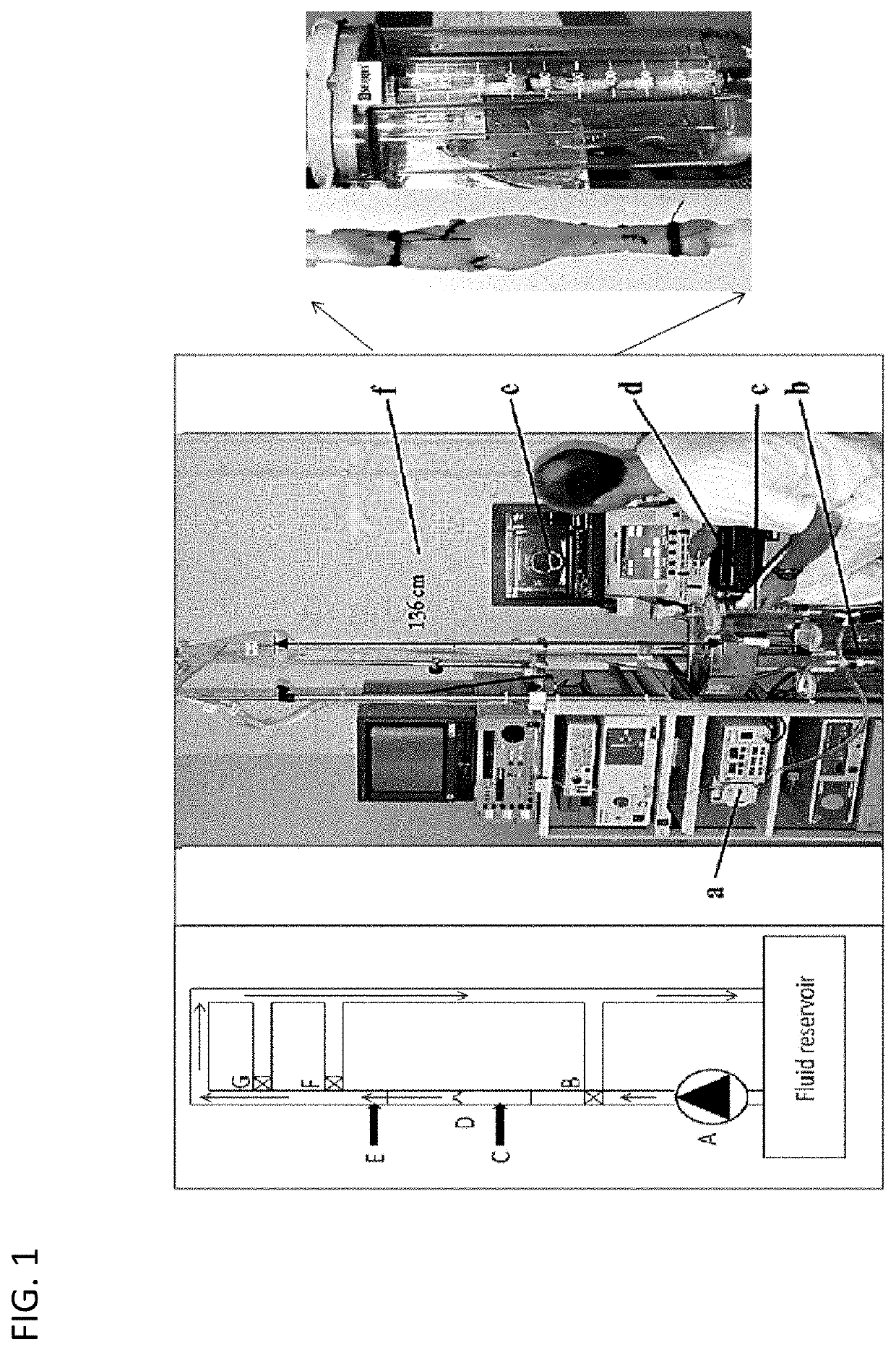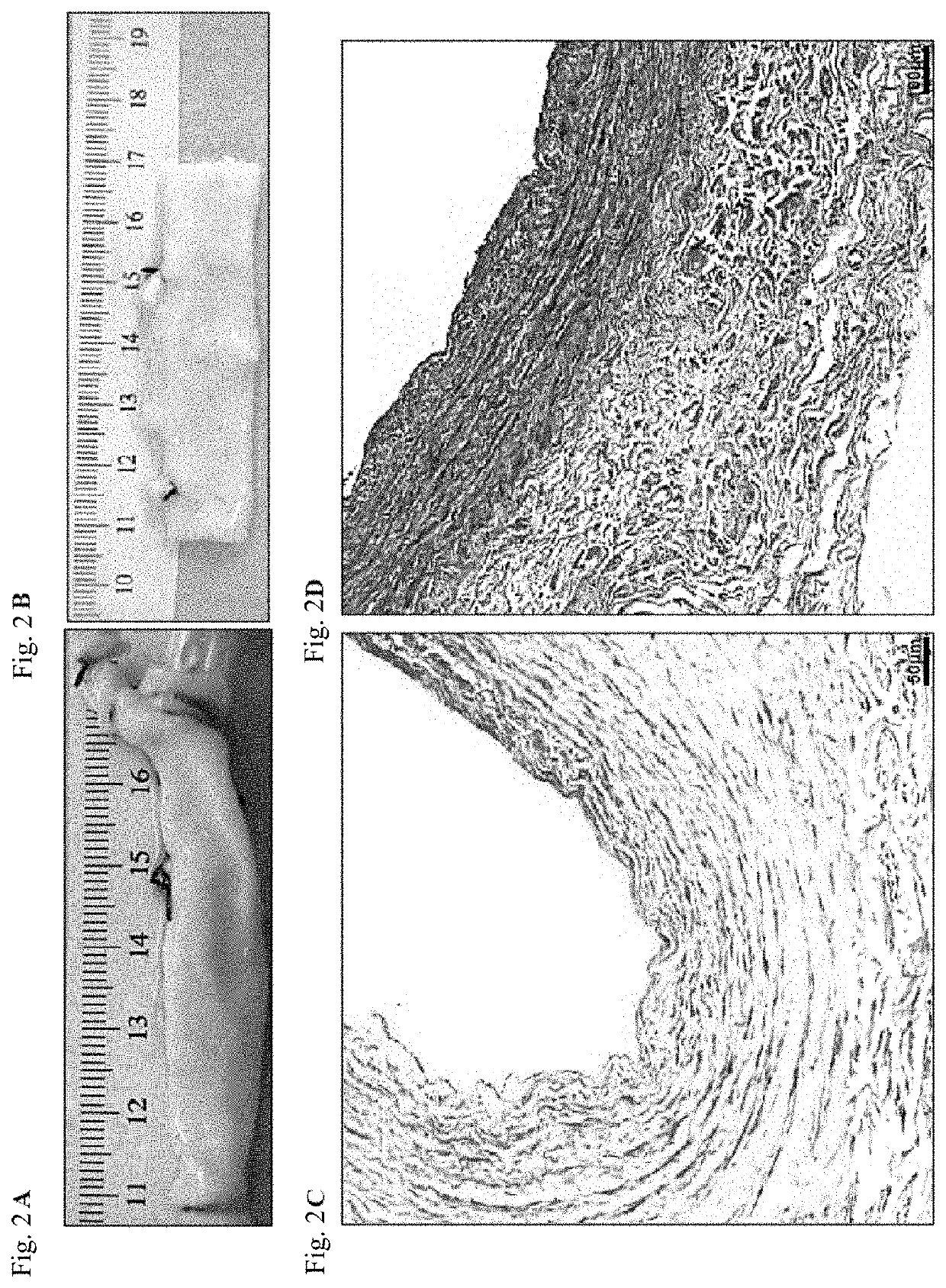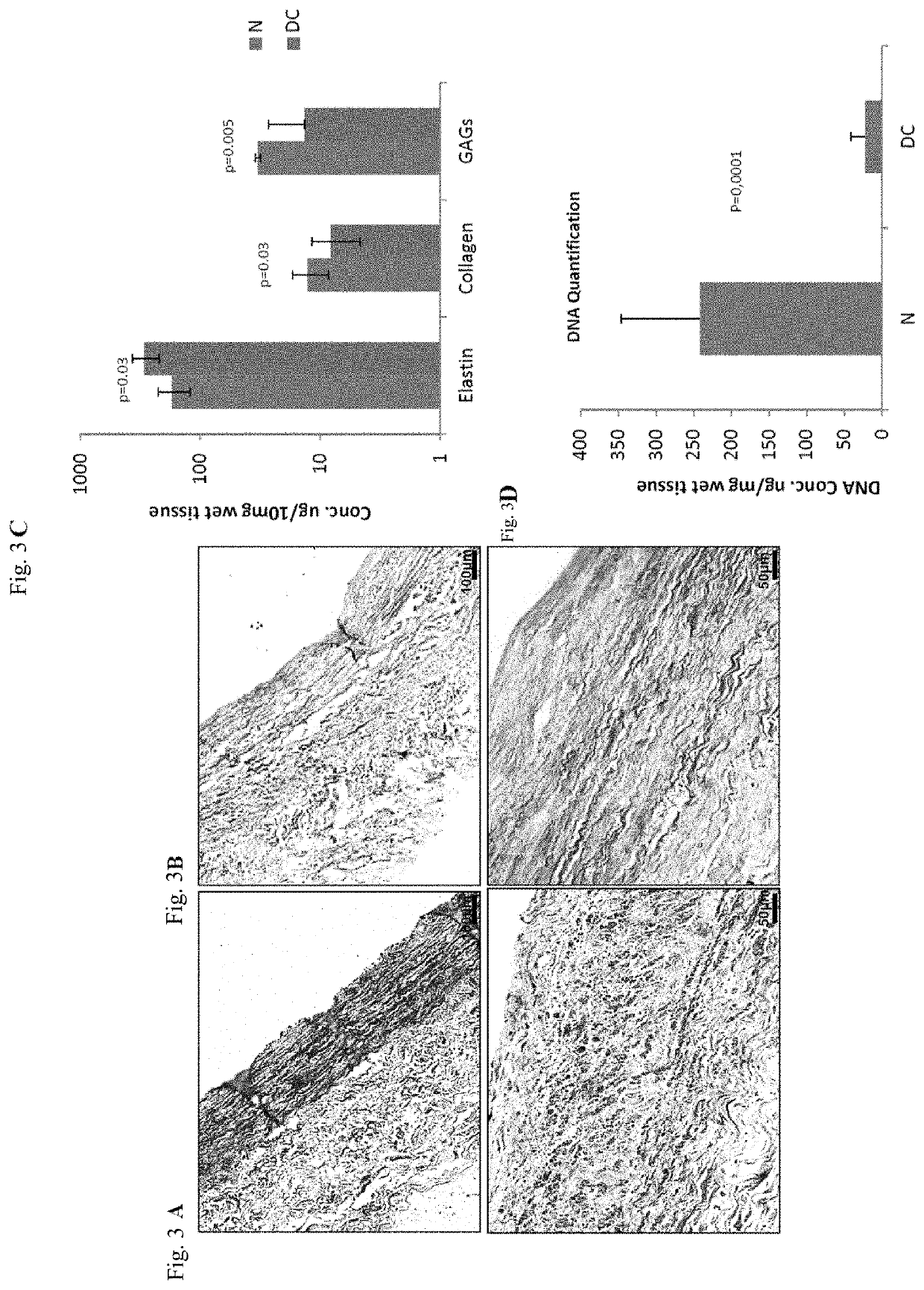Bioengineered allogeneic valve
a bioengineered allogeneic valve technology, applied in the field of valve recellularization, can solve the problems of blood backflow, chronic venous insufficiency, blood leaking backward,
- Summary
- Abstract
- Description
- Claims
- Application Information
AI Technical Summary
Benefits of technology
Problems solved by technology
Method used
Image
Examples
examples
Harvesting of Valve-Bearing Veins
[0171]Vein segments including the common femoral vein, profunda femoral vein and femoral vein were harvested from adult human cadavers by using vascular surgical technique and carefully ligating all side branches. Valves were identified and 12 segments were cut with a margin of 3-4 cm on each end of the valves. The vein segments were thoroughly rinsed in phosphate buffered saline (PBS) containing 0.5% penicillin, 0.5% streptomycin, 0.5% amphotericin B and preserved at 4° C. The samples were transported within one week on ice to the laboratory.
Decellularization and Characterization
[0172]Decellularization was carried out using 1% Triton, 1% Tri-n-butyl phosphate (TNBP) and 4 mg / L DNAse. The decellularized vein segments were evaluated for residual DNA content, staining with hematoxylin and eosin (HE) and Masson's trichrome (MT) using standard procedures for acellularity and quantification of various ECM proteins. Immunohistochemistry for detection of HL...
PUM
| Property | Measurement | Unit |
|---|---|---|
| closure time | aaaaa | aaaaa |
| dynamic pressure gradient | aaaaa | aaaaa |
| dynamic pressure gradient | aaaaa | aaaaa |
Abstract
Description
Claims
Application Information
 Login to View More
Login to View More - R&D
- Intellectual Property
- Life Sciences
- Materials
- Tech Scout
- Unparalleled Data Quality
- Higher Quality Content
- 60% Fewer Hallucinations
Browse by: Latest US Patents, China's latest patents, Technical Efficacy Thesaurus, Application Domain, Technology Topic, Popular Technical Reports.
© 2025 PatSnap. All rights reserved.Legal|Privacy policy|Modern Slavery Act Transparency Statement|Sitemap|About US| Contact US: help@patsnap.com



